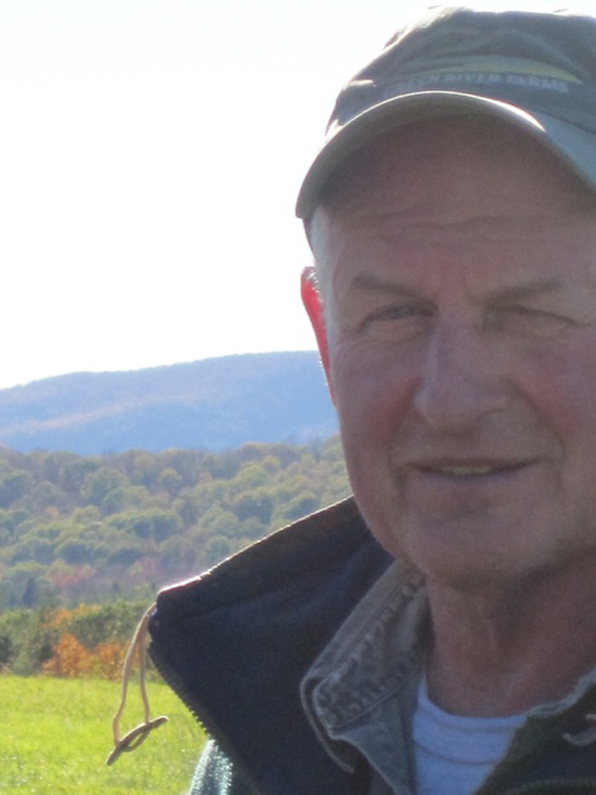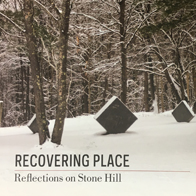Jim Galusha’s family has been working the land on Stone Hill since the early 1900s. Jim was raised in Williamstown on his family’s farm, Fairfields Dairy, where he worked exclusively for the first half of his life. He then branched out into heavy equipment and excavation work. Jim still maintains a presence in the daily operation of his family’s farm.

July 4–October 10, 2016
side-hill plow
Side-hill plow
Wood and metal
c. 1910
Lent by Hopkins Memorial Forest–Farm Museum
TRANSCRIPT:
My family has worked the land on Stone Hill since the early 1900s, primarily growing forage—hay and corn—for our cattle. Our family history has been passed down through stories told to us by my grandfather and father, and can be confirmed through the map A Portraiture of Stone Hill. Our history is one of farming on Stone Hill.
Farms have come and gone on Stone Hill since the early 1800s. One of the most significant was the Bulkley family farm, established around 1805, which was instrumental in developing the now well-known seedling potato. The next farm owner was H. T. Proctor, who owned the land on the hill’s north end. He left Williamstown when, after repairing Stone Hill Road at his own expense, the town refused to improve its other main roads. My cousin, Arthur Galusha, bought the property in 1933 and renamed it Green Meadow Farm. He used the southern end of Stone Hill for growing crops and the northern end for grazing his cattle. Green Meadow Farm became well known for breeding fine Guernsey cattle that produced milk with record high butter-fat content.
The property has since changed hands several times, and has been used as pasture land as recently as the 1980s. The northern end of Stone Hill, referred to as the Cluett Farm or Kite Hill, is now owned by Williams College and is still used to grow forage.
Farming on the hard, steep land for which Stone Hill was aptly named presented challenges in early farming days. To meet these challenges, the side-hill plow was developed by R. I. Knapp in 1875 as an adaptation of the Killmore Plow, which was used for hilly terrain. Knapp invented a locking device, which enabled the plow to swivel, moving the soil to the right or left as needed. This changed the plowing direction from straight up and down the hill, which encouraged massive soil erosion, to “contour plowing” across the slope, allowing farmers to conserve rainfall and nutrients in the soil.
Recovering Place: Reflecting on Stone Hill
By Mark C. Taylor
An illustrated book chronicling the land art and sculptures created by Mark C. Taylor at his home in the Berkshire hills, echoing themes found in the exhibition. Supported in part by Herbert A. Allen, Jr. and the Clark Art Institute and published by Columbia University Press. Call the Museum Store at 413 458 0520 to order.


